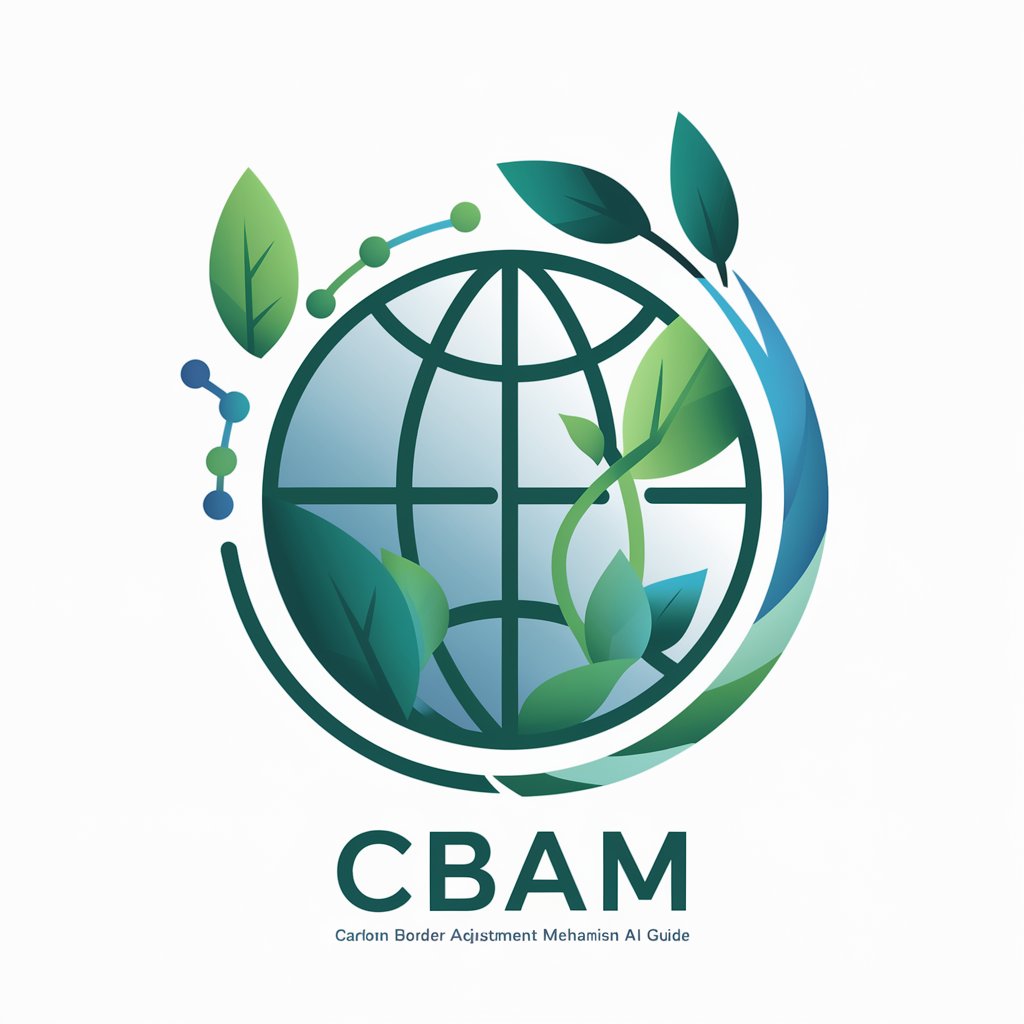CBAM - Carbon Legislation Guidance

Hello! I'm here to guide you through CBAM legislation details and queries.
Navigating Carbon Compliance with AI
Can you explain how the Carbon Border Adjustment Mechanism affects global trade?
What are the key components of the CBAM legislation?
How can companies prepare for the implementation of CBAM?
What are the environmental benefits of the Carbon Border Adjustment Mechanism?
Get Embed Code
Introduction to CBAM
CBAM, or Carbon Border Adjustment Mechanism, is designed as an advanced guide to navigate through the complexities of carbon regulation and its impact on trade and industry. At its core, CBAM aims to level the playing field for European Union manufacturers by adjusting the price of imports according to their carbon content. This ensures that ambitious climate policies do not lead to 'carbon leakage,' where companies transfer production to countries with laxer emission constraints. For example, CBAM would apply a tariff on imported steel from a country without stringent carbon emissions standards, thus preventing companies from circumventing EU environmental regulations by importing cheaper, higher-carbon products. Powered by ChatGPT-4o。

Main Functions of CBAM
Policy Guidance
Example
CBAM offers comprehensive advice on navigating the EU's carbon pricing policies. It aids businesses in understanding how these policies affect their operations and strategies for compliance.
Scenario
A manufacturing company seeks to import raw materials from outside the EU. CBAM provides detailed guidance on how the carbon content of these materials will affect import costs and suggests strategies for minimizing these costs, such as investing in cleaner production technologies.
Compliance Strategy Development
Example
CBAM assists companies in developing strategies to comply with carbon pricing mechanisms, focusing on sustainability and cost-efficiency.
Scenario
A textile exporter in the EU plans to expand its market to countries with less strict environmental regulations. CBAM helps the exporter understand the potential tariffs their products might face when re-entering the EU and advises on reducing their carbon footprint to remain competitive.
Economic Analysis
Example
CBAM provides economic analysis on the impact of carbon tariffs on global trade patterns, helping businesses and policymakers make informed decisions.
Scenario
A policy analyst uses CBAM to evaluate the potential economic effects of proposed adjustments to carbon pricing on the automotive industry, enabling stakeholders to anticipate market shifts and adjust their strategies accordingly.
Ideal Users of CBAM Services
Business Executives and Managers
This group includes leaders of companies that either export products to the EU or import raw materials from outside the EU. They benefit from CBAM by gaining insights into how carbon pricing affects their trade activities and by receiving guidance on compliance and strategic planning to mitigate costs and enhance sustainability.
Policy Makers and Analysts
Policymakers and analysts focused on environmental, trade, and economic policies can use CBAM to understand the implications of carbon pricing on global trade, industry competitiveness, and carbon leakage. This enables informed decision-making and policy development that balances economic growth with environmental objectives.
Environmental Advocates and NGOs
These users are engaged in promoting sustainable practices and influencing policy. CBAM provides them with detailed information on the effectiveness of carbon pricing mechanisms in reducing emissions and how they can advocate for stronger environmental regulations and corporate responsibility.

Guidelines for Using CBAM
1
Initiate your journey at yeschat.ai for an uncomplicated start, granting access to a free trial devoid of the necessity for ChatGPT Plus subscription or prior login.
2
Explore the main features and capabilities of CBAM through the interactive tutorial provided on the website, ensuring a solid understanding of how to navigate and utilize the platform effectively.
3
Identify your specific needs or questions related to the Carbon Border Adjustment Mechanism and select the relevant section of CBAM that best suits your inquiry.
4
Utilize the ask-a-question feature to directly input your queries. Be as specific as possible to ensure the most accurate and helpful responses.
5
Take advantage of the feedback and rating system to share your experience, helping to improve CBAM’s functionality and service for all users.
Try other advanced and practical GPTs
DARA
Empowering Financial Compliance with AI

UTime
Optimize Your Time with AI

QuerySphere
Where wit meets wisdom.

Numerology
Unlock Your Potential with AI-Powered Numerology

ストーリーマスター
Empowering RPG Adventures with AI

InsurTech
Empowering Insurance with AI Technology

Jeep
Unlock Jeep and Jeepney Insights

Reinsurance
Mitigate Risk with AI-Powered Reinsurance

CookMatic
Revolutionize Your Kitchen with AI-Powered Culinary Wisdom

Augustine
Rediscover wisdom through AI-powered Augustine

myMINDSETisKEY
Empowering your mindset, powered by AI.

Ghostwriter
Empowering your words with AI.

Common Questions about CBAM
What is CBAM and how does it work?
CBAM, or the Carbon Border Adjustment Mechanism, is designed to guide users through the complexities of carbon pricing and regulations. It works by providing up-to-date information, answering queries, and offering advice on navigating legislation effectively.
Can CBAM assist with academic research on environmental policies?
Absolutely, CBAM is equipped to provide detailed information, resources, and data analysis which can be invaluable for academic research on environmental policies, including the Carbon Border Adjustment Mechanism.
Is CBAM suitable for business compliance?
Yes, CBAM offers guidance and resources for businesses looking to comply with carbon pricing and environmental legislation, making it easier to understand and implement necessary changes.
How often is CBAM updated with new information?
CBAM's database and resources are regularly updated to reflect the latest developments in legislation and environmental policies, ensuring users have access to the most current information.
Does CBAM provide personalized advice?
While CBAM offers generalized guidance and information, it can tailor responses to specific queries, making the advice as relevant and useful as possible to individual circumstances.
